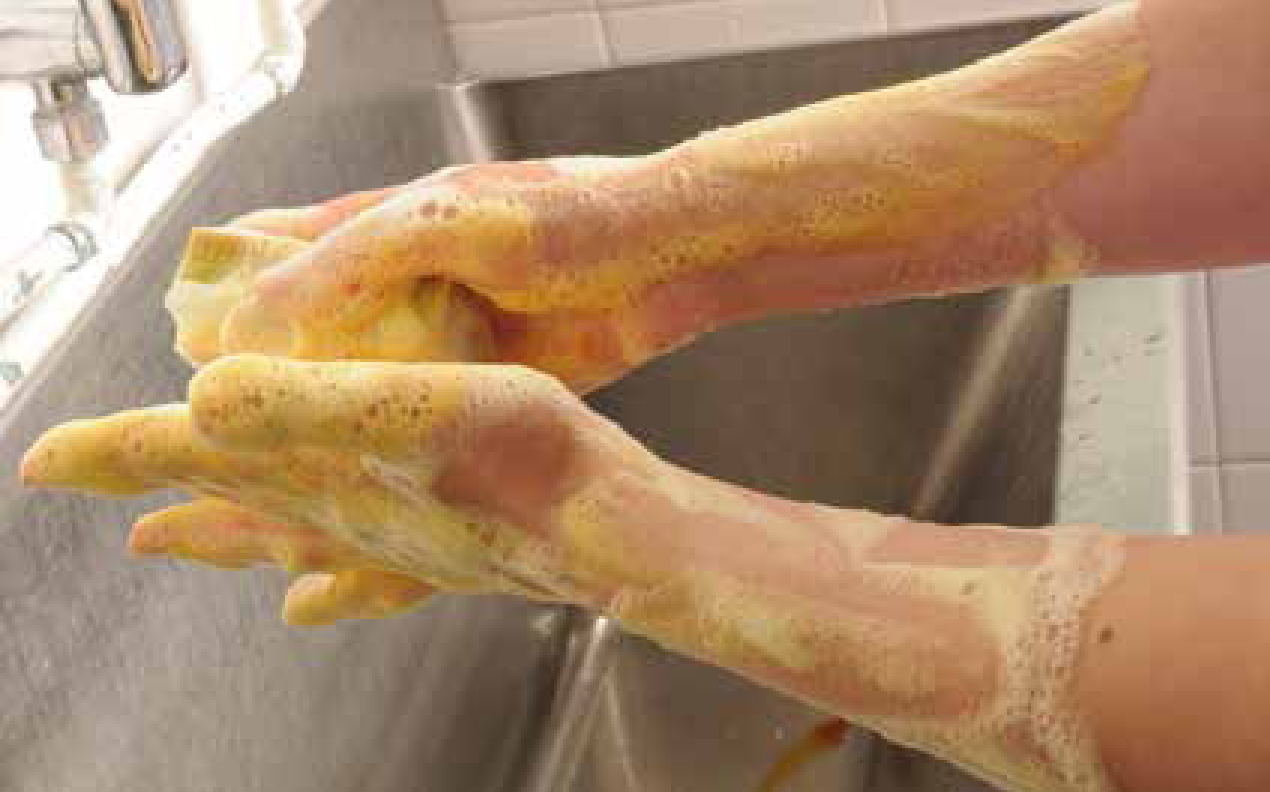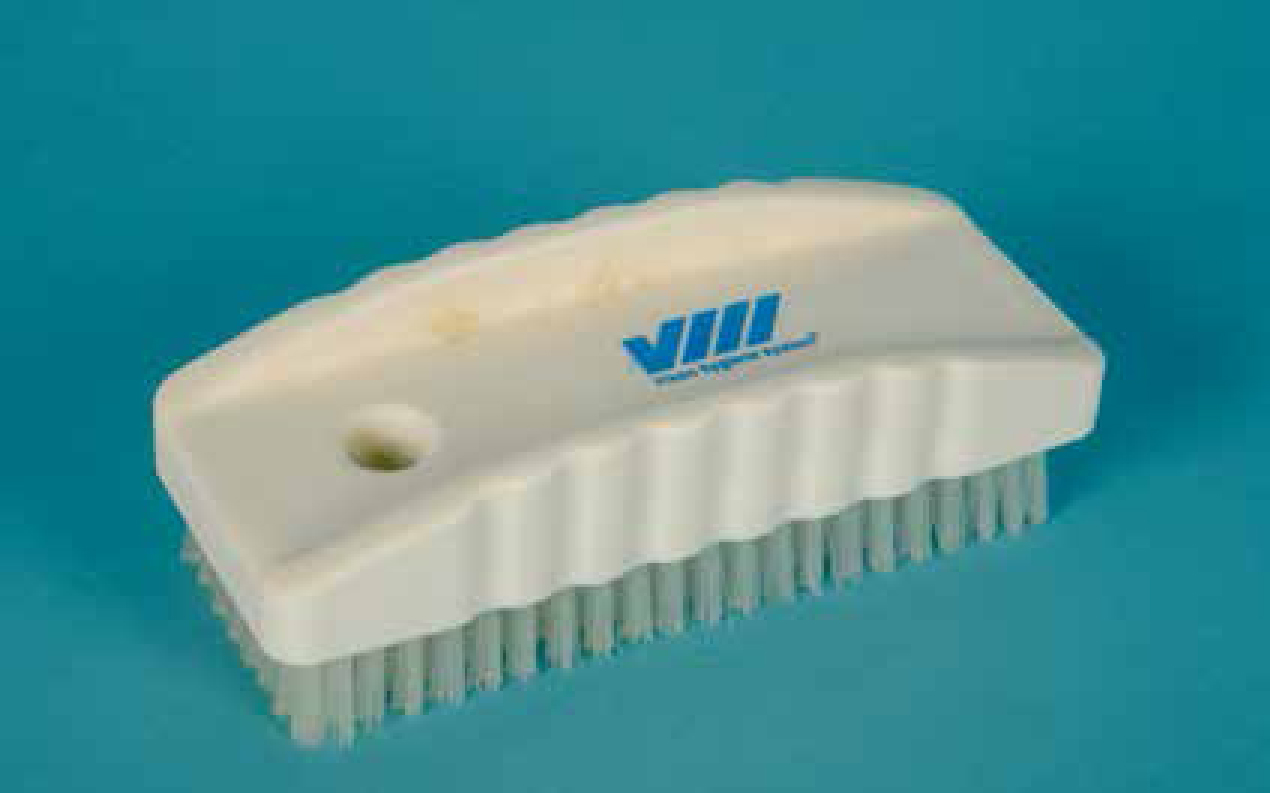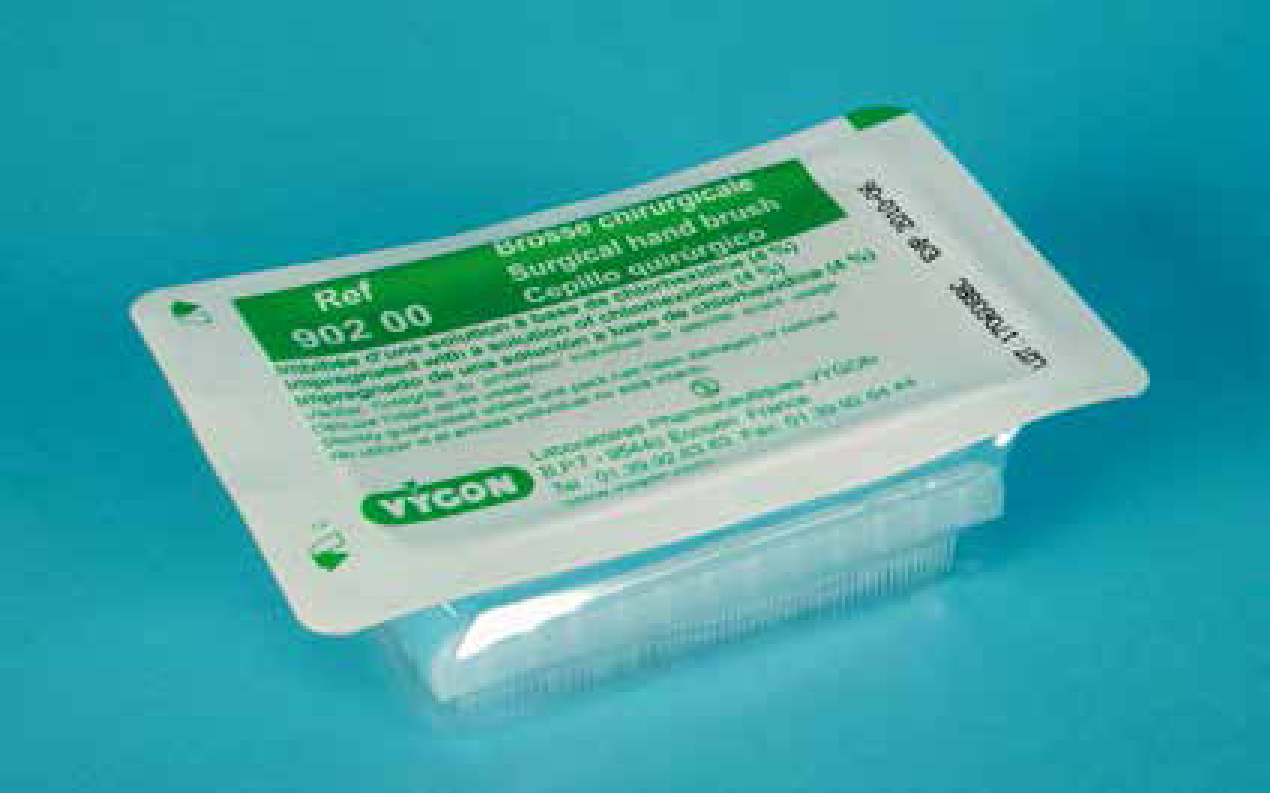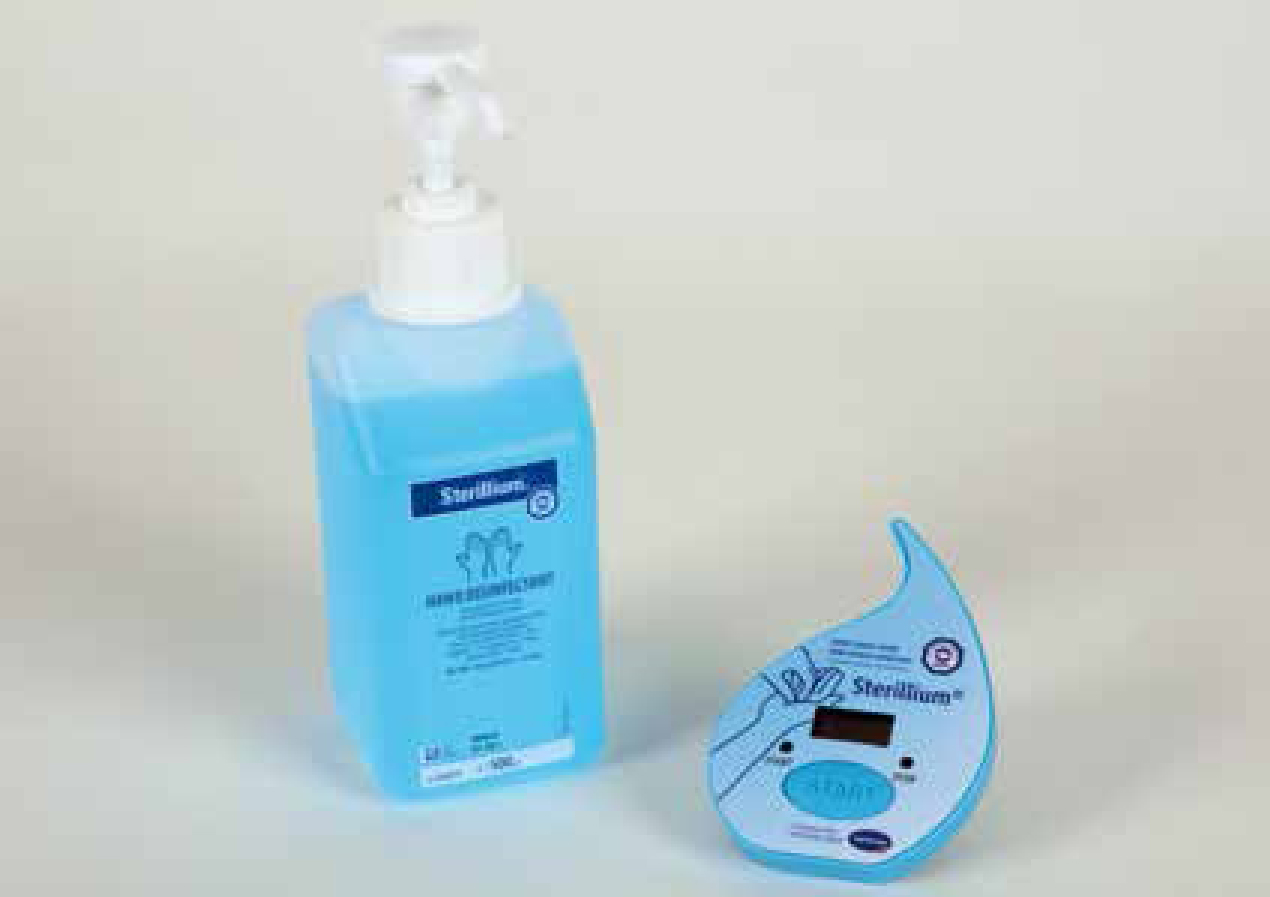The notion of washing hands before carrying out surgical procedures was introduced by Lister in the late 18th century. He found that there were fewer infections when surgeons washed their hands with an antiseptic agent before carrying out a procedure (Boyce and Pittet, 2002). At the time the antiseptic used was carbolic acid and, although thankfully no longer accepted practice, the hand hygiene theory still remains strongly today.
Bacteria on the skin can be divided into two groups, residual and transient. Residual bacteria naturally occur in the deeper layers of skin on the hands and other areas of the body. Their numbers can be reduced by hand antisepsis, but they are never fully eradicated. Transient bacteria, however, can be removed from the surface of the skin by hand antisepsis. These bacteria are not naturally occurring and can colonise the skin on the hands following contact with patients and the environment (Boyce and Pittet, 2002). A common example of picking up transient bacteria includes contact with ‘high touch’ areas, such as telephones and computer keyboards.
The reasons behind surgical hand antisepsis are threefold. First the eradication of transient bacteria from the surface of the skin, second to reduce the numbers of residual bacteria, and last to prevent rebound growth of residual bacteria over a period of time.
It is now commonplace for surgeons to wear sterile gloves when carrying out surgical procedures, this however does not mean that thorough hand antisepsis is not needed. It has been quoted that 18% of gloves have perforations in them after a surgical procedure with 80% of these going unnoticed by the surgeon (Widmer, 2013). This may contribute to surgical site infections (SSIs) especially if the patient may have other risk factors, such as antibiotic protocols, not being adhered to (Misteli et al 2009).
The reasons and methods behind surgical hand preparation in both human and veterinary establishments are the same with veterinary establishments being a little behind their human counterparts with regards to evidence for the use of hand hygiene products and techniques. Although there is some literature available from the veterinary industry the majority of the research available both in general and thus in this article is from the human field. However, as the reasons for surgical hand antisepsis is the same, to prevent SSIs and the associated problems, the author feels that a lot of the results gained from studies are easily transferrable between human and animal surgery.
Pre surgical hand antisepsis with soap and scrub brushes
Historically, surgical hand antisepsis has been carried out using either chlorhexidine gluconate (CHG) or povidone iodine (PI) alongside water and a scrubbing brush (Figures 1,2 and 3). Many studies have been carried out comparing the efficacy of the two products particularly with regards to how long the hands should be prepared for. Initially it was thought that hands should be scrubbed for 10 minutes but O'Shaugnessy et al (1991) carried out a study comparing times for surgical hand scrubs using CHG and they found that scrubbing hands for 2 minutes was adequate, but scrubbing for 4 minutes was more effective at reducing bacterial load further, concluding that the first scrub of the day should take 4 minutes and subsequent scrubs 2 minutes. Literature varied in the timing advised for pre surgical hand antisepsis with 2–6 minutes per scrub being the most common range of timings given in the literature. Aly and Malbach (1988) found CHG and PI, when used with a scrubbing brush, to be similar in reduction of baseline bacterial load immediately after a 2 minute application on the hands, but CHG to have superior residual activity when bacterial counts were taken 6 hours later. At the time CHG was preferred because studies showed good bacterial count reductions after a short application, and also good residual activity. Dermal irritation from surgical hand antisepsis was already becoming noted which contributed to the preference for a shorter application time.



There were two techniques published of methodically scrubbing hands to ensure that they were subject to both the antimicrobial soaps contact time but also the mechanical action of the scrubbing brush. These were the anatomic timed method and the counted brush stroke method (Table 1).
| Anatomic timed method | Counted brush stroke method |
|---|---|
|
|
|
There were concerns raised about the abrasiveness of scrubbing brushes on the skin and research was carried out into the effects of this. Kikuchi-Numagami et al (1999) compared pre surgical hand preparation with a brush against not using a brush. Participants were divided into two groups with one group using a brush and the other not. Both groups used PI as the scrub solution, used the same timings and neither was allowed to use moisturiser or don surgical gloves 3 hours prior to measurements being taken. The study was carried out over 11 days in early summer and then, again in autumn to determine whether hand irritation could also be affected by the time of year. Interestingly they found significantly more skin irritation in the brush group than in the non-brush group in the autumn, but in the summer there was no significant difference between the groups. The author feels it would have been interesting to repeat the study using CHG, as CHG has been historically proven to have better antimicrobial efficacy and longer residual activity than PI, and so is more widely used for hand antisepsis in establishments which still use this method of handwashing over alcohol (Aly and Malbach, 1988). Dermal tolerance is difficult to quantify with few studies such as the above one by Kikuchi-Numagami et al (1999) as well as the one discussed below by Pietsch (2001) actually using equipment to record factors such as skin pH and the structure of the stratum corneum. Many of them, such as Carro et al (2007), used questionnaires and surveys to gain the opinions of participants using hand scrubbing or hand rubbing techniques increasing the risk of subjectivity.
Aside from the use of brushes, there were also concerns raised regarding the effects of using CHG on the hands. A study comparing CHG to a propanol-based alcohol hand rub was carried out by Pietsch (2001). In this study participants were divided into two groups: one group used the alcohol for hand antisepsis; and one group used CHG with no brush. The products were used eight times per working day over 7 weeks, followed by a break of 4 weeks before being swapped over and the study repeated using the other product. When dermal tolerance was assessed CHG was shown to be inferior in areas such as skin roughness, skin squames removed and skin hydration (skin was assessed by a dermatologist). Some volunteers from the CHG group even had to drop out of the study because of the skin irritation.
Widmer (2013) also pointed out the risk of recontamination of hands after rinsing hands as taps in human hospitals commonly have pseudomonas isolated from the faucets. However, they did go on to state that currently there were no SSIs found that have been linked to this.
Despite the evidence, some areas of veterinary medicine and surgery are still very much based on tradition with many institutions still using the hand scrubbing method over anything else despite the current evidence available. A survey based study by Verwilghen et al (2011a) found that 80% of respondents still used disinfectant soaps, mainly CHG, and scrubbing brushes as their pre surgical hand preparation choice.
The use of alcohol hand rubs
There have been many studies into the use of alcohol hand rubs either comparing different formulations or comparing them to previously used hand soaps. Those studies comparing alcohol hand gels to soap have all shown that they are superior to commercially available hand soaps and have many advantages including negating the need for an abrasive brush, no water required, quicker hand preparation times and better dermal tolerance (Pietsch, 2001; KikuchiNumagami et al, 2009; Widmer, 2013). As mentioned previously, it should be noted by the reader that the majority of this evidence is from human research.
Alcohol used as a hand rub preoperatively is of a different formulation to that which is commonly used in ward areas which is more of a gel consistency and normally contains no more than 75% alcohol. Another difference between these which may support the use of the liquid hand rubs in ward areas rather than the alcohol gels is that in one study the gel was not found to be effective after just 30 seconds of application, but required a longer application time to be effective (Pietsch, 2001).
One study by Shen et al (2015) compared an alcohol hand rub to CHG or PI for pre surgical hand antisepsis. They enrolled a large sample of healthcare workers who used either the alcohol hand rub in the intervention group or CHG or PI in the control group. Bacterial sampling from the hands took place pre and post operatively and found lower rates for the group that used the alcohol hand rub compared with those that did not. On critiquing this article it appears that there are no numbers for how many in the control group used CHG and how many used PI. As these two perform very differently especially with regards to residual activity this could have affected the results. Additionally the surgical procedures were all of different times and so the timings of the postoperative skin sampling bacterial counts were not under much control.
There was a similar study carried out in the veterinary field by Verwilghen et al (2011b), which compared either CHG or PI and a propanol-based alcohol hand rub. They carried out a preliminary study which actually found that PI was not comparable to the other two products with regards to reduction in bacterial load and so in the surgical study only CHG and the alcohol hand rub were compared. The alcohol and CHG were similar in initial bacterial counts post hand preparation, but the residual activity of the alcohol was far superior after 3 hours. In the discussion of this study the authors made a very valid point that the majority of studies into hand preparation techniques only look into bacterial counts on the hands whereby only one study which they found actually used SSIs as an end point (Parienti et al, 2002). This study found that when comparing reported SSIs the two methods of hand preparation were comparable, however, the use of alcohol hand rub had an improved compliance with hand hygiene and so was preferable. The author looked to see whether any more studies of this kind had been done since but a literature search yielded no results. After the Verwilghen et al (2011b) study, the practice where the study took place changed their pre surgical hand preparation protocol based on the results.
The most common surgical hand rub available on the market is a propanol-based hand rub and this is also the only one of which the author has had any experience with in their establishment. It was used in a study by Kampf et al (2005) and was compared to another alcohol hand rub. The efficacy of the product was tested at 3, 2, 1.5 and 1 minute after application. Bacterial counts were taken from the fingertips after a pre disinfection hand wash with soap and water, directly after hand preparation with the hand rub (for the allotted time) and then one hand was gloved for 3 hours after which more bacterial counts were taken to test for residual activity. It was only at 1 minute that the hand rub was found to be significantly less effective than the reference product at 3 minutes. At 2 and 3 minutes the product did not show any additional effect. This shows that the hand can be disinfected for a minimum of 1.5 minutes and still be effective both straight away and after 3 hours, showing residual activity. Suchomel et al (2009) also found this to be the case with the same product, but what they also found was that after 3 hours a previously gloved hand still had similar bacterial counts and reapplication of the product did not produce any further decrease in bacteria showing that the bacterial count had been bought to an ‘irreducible minimum’ after its first application.
With evidence like this in mind the company that makes this product also produce a timer for institutions to place in the room where pre surgical hand preparation takes place (Figure 4). The timer alarms after 1.5 minutes to indicate adequate hand preparation. It is important that the product is in contact with the hands for that amount of time and repeat applications will be needed at which point the pump can be triggered with the elbow to dispense more onto the hands. This quicker application time is especially beneficial in an emergency situation where time is of the essence. Hands need to be visibly clean before application of the hand rub, if it is the first surgical procedure of the day or the hands are visibly soiled, a hand wash with soap and water is necessary before using the alcohol hand rub. For any other surgeries that day only the hand rub is needed unless, again, the hands are visibly soiled.

There is little evidence for the veterinary industry on hand hygiene products used and their application; few studies are found unlike the wealth of human evidence which is available. This would prove to be an interesting area for further research and one which veterinary nurses could be heavily involved and even lead in.
Conclusion
With the evidence now pointing towards alcohol hand rubs being more superior for a number of reasons, many healthcare institutions are now moving towards using these in the preoperative phase. As with any change to protocol, looking at the evidence gives a clear indication that alcohol hand rubs have many advantages over the more traditional hand preparation techniques. Provided that personnel know how to apply the product for it to work to maximal effect there is a clear advantage. An audit should be carried out to prove that this is the case for any establishment.
Any further research in this area specifically in veterinary establishments would be greatly received and would help to change and establish new protocols especially in those areas where tradition still stands!

